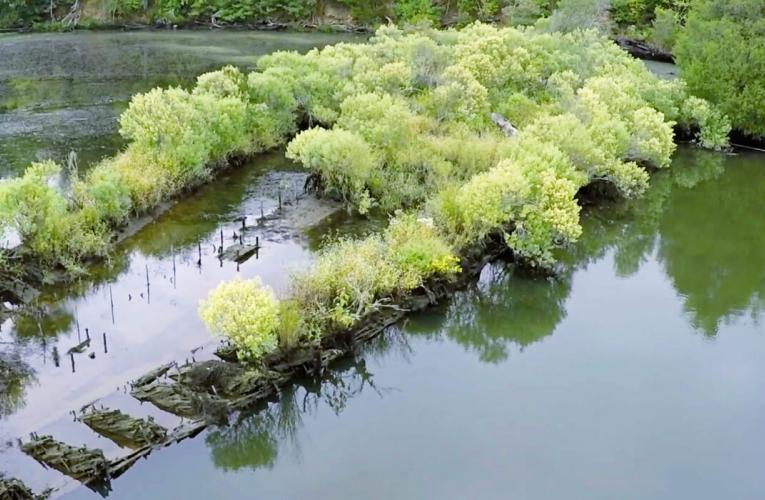When I look back on our history, I’m struck by how much groundbreaking work has taken place at Duke Forest. I want to honor that legacy and build on it as we head into our second 90 years."
–Sara Childs, Director of the Duke Forest
A Resource to be Protected
They’re also concurrently working to expand and re-imagine community engagement.
“After-work runners and nature lovers will always be frequent sights on our trails and roads, but at a time of increasing worldwide environmental degradation, we also want to play a role as an instrument of change. We want the community to recognize the Forest as a place to engage with science and learn about natural resources stewardship,” Childs said.
To achieve that goal, she and her team are investigating ways to expand the Forest’s citizen science program, create more inclusive programming, and raise awareness among all members of the community that “the Forest is more than just woods lining county roads,” she said. With 12 natural heritage areas, interpretive trails, Indigenous sites, a cobblestone road from colonial times, sites where enslaved Africans worked the land, and other significant cultural sites, “it’s a dynamic and important land base with much to teach us about our history and our future, if we take care of it.”
Harnessing new technologies to protect the forest’s resources and expand its utility as a research and teaching laboratory – not just for natural sciences but also fields as diverse as the humanities and engineering – plays a big role in Child’s strategic plans.
Computerized forest modeling systems are revolutionizing research and management by enabling scientists and Child’s staff to track changes occurring in the Forest and better anticipate future opportunities and challenges.
Drone-mounted sensors and cameras, for example, are now capturing images and data that reveal key insights into forest health and wildlife populations that were largely unattainable even 10 years ago, let alone back in 1931 when Clarence F. Korstian, founding director of the Forest, first began his work there. In recent years, the Forest has become a proving ground for the development and testing of this cutting-edge technology.
New research that builds on long-term sample plots throughout the Forest – installed by Korstian in the '30s and examined by almost a century of forestry students and researchers – show that the forest ecosystem is dramatically changing. The old oaks and hickories that once defined the Forest are reaching their climax but are not regenerating because climate and soil conditions no longer favor them. In their place, a new suite of species—sweetgums, maples, beeches, tulip trees—are poised to become the dominant species.
A Digital Age Forest
As the Forest itself changes, so too is the way scientists and students collect, store and share data.
“One of the things we’ve been working on for several years now is how to make the incredible wealth of data from studies conducted in the Forest over the decades accessible to scientists, students and managers worldwide,” Childs said.
In 2019, the Forest staff off-loaded 90 linear feet of data to the Duke University Libraries’ Digital Repository. These included original photo slides, charts, notes, and maps from the entire history of the Forest. Digitizing these data – especially hand-written data from the many long-term studies – “opens huge opportunities for us as a research hub,” Childs said, “but much more work remains.”
Long-term plans also call for equipping the Forest with a network of on-the-ground real-time monitoring devices, such as weather gauges and stream instrumentation, that could be accessible from anywhere in the world. Such a network will ensure the Forest continues to serve as an important resource for environmental research and position Duke as a place where this research can be conducted on a whole new level and at many different scales.
Working to turn these ambitious goals into reality strikes Childs as an especially fitting way to mark the forest’s 90th anniversary.
“When I look back on our history, I’m struck by how much groundbreaking work has taken place at Duke Forest,” she said. “Catherine Keever’s studies in the 1950s transformed our understanding of the southern landscape and cemented the theory of old field succession. Norm Christensen and Bob Peet’s work in the ‘80s revealed a deeper understanding of the biology of forest change, which gave rise to the self-thinning law and other important ideas in community ecology. Studies by Ram Oren, Bill Schlesinger, Jim Clark, Emily Bernhardt and many others over the last 30 years have produced much of what we know about how climate change affects forests and how forests respond. And those are just a few of many examples.”
“I want to honor that legacy and build on it as we head into our second 90 years,” Childs said.
Read more stories featured in the Duke Environment Magazine Spring 2021 issue.







